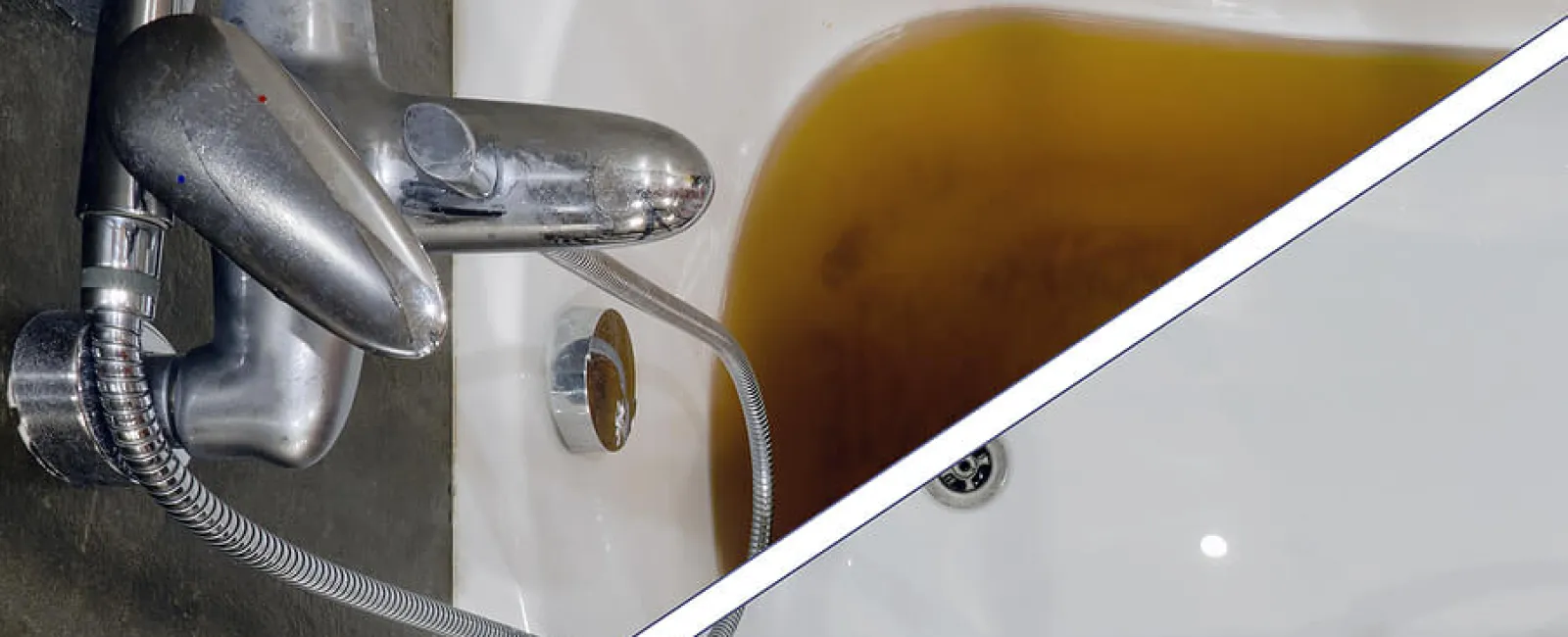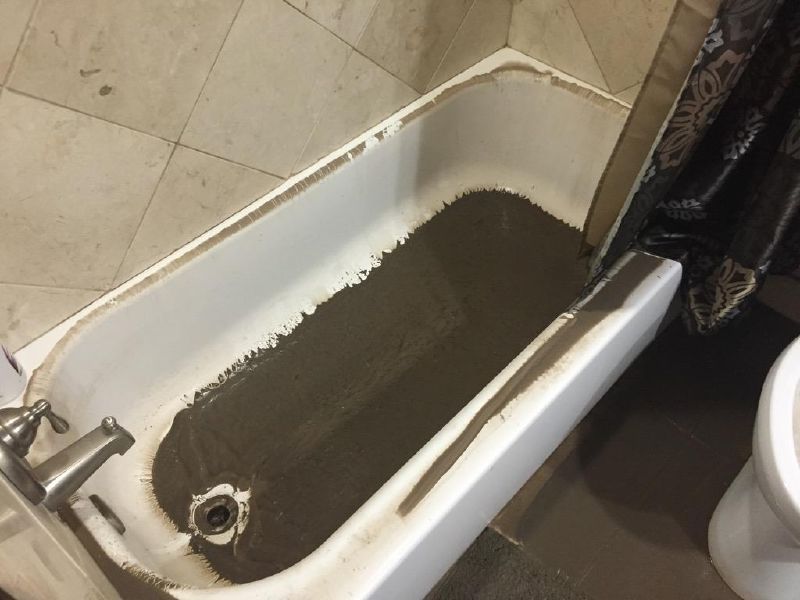Everyone may have their own individual conception involving Why is There Sewage Coming Up Through the Bathtub.

Sewer back-up in the bath tub can be a distressing and unsanitary trouble for any type of property owner. Not just is it inconvenient, but it also postures serious wellness dangers and suggests underlying issues with the plumbing system. Understanding why sewage is showing up with the bathtub is vital for taking ideal activity to address the problem effectively.
Intro to the Concern
Common Factors for Sewage Backup
Obstructions in the Sewer Line
Among one of the most usual sources of sewer backup is a clog in the drain line. This can occur because of the accumulation of particles, oil, or foreign things in the pipes, protecting against appropriate flow and causing sewage to back up right into your bath tub.
Tree Origin Intrusion
Tree origins looking for dampness and nutrients can infiltrate sewage system lines with tiny splits or joints. Over time, these roots can grow and expand, triggering significant damages to the pipelines and resulting in sewage back-up issues.
Understanding the Problem
When sewer draws back up right into the tub, it's a clear indicator of a trouble with the water drainage system. The wastewater that needs to be flowing far from your home is rather finding its way back right into your living space, which can bring about significant damages and health hazards.
Potential Reasons
Numerous factors can add to sewage backup in the tub. From obstructions in the sewer line to problems with the plumbing facilities, identifying the source is essential for finding a service.
Aging Framework
Older homes may have obsoleted plumbing systems that are much more susceptible to corrosion, splits, and damage. As pipes age, they end up being more susceptible to leakages and blockages, raising the chance of sewer back-up events.
Heavy Rainfall or Flooding
During periods of heavy rainfall or flooding, the sewer system may become overwhelmed with excess water, triggering backups and overflows. This can cause sewer supporting right into tubs and other components inside the home.
Signs of Sewer Back-up
Foul Odors
Undesirable odors emanating from drains or components, especially in the restroom, might indicate sewage back-up issues. These smells are usually strong and relentless, indicating a problem that needs prompt focus.
Slow Draining Fixtures
Bathtubs, sinks, and toilets that drain slowly or otherwise in any way could be experiencing sewer backup. If numerous fixtures are impacted concurrently, it's likely that the concern originates from a common factor, such as the major drain line.
Gurgling Noises
Unusual gurgling or gurgling noises originating from drains when water is running elsewhere in your house are a measure of air entraped in the plumbing system. This air build-up can arise from sewer back-up and ought to be checked out without delay.
Health And Wellness Risks Connected With Sewer Back-up
Contamination of Water Supply
Sewage backup can contaminate the supply of water in your house, presenting a major health and wellness threat to you and your family. Exposure to polluted water can cause gastrointestinal problems, skin infections, and various other ailments.
Mold and mildew Development
Wetness from sewage back-up can create ideal problems for mold and mildew development in your home. Mold and mildew spores can worsen respiratory troubles and trigger allergic reactions in delicate individuals, making prompt cleaning necessary.
Spread of Illness
Sewer has hazardous bacteria, viruses, and bloodsuckers that can create a variety of diseases, consisting of liver disease, cholera, and gastroenteritis. Entering contact with sewage or infected surface areas places you in jeopardy of infection.
Tidying up After Sewer Back-up
Disinfection Procedures
Extensively decontaminate and sterilize influenced locations after sewer backup to get rid of damaging bacteria and prevent mold development. Use ideal cleaning products and protective gear to guarantee risk-free and efficient cleanup.
Repair of Influenced Areas
Repair any kind of damage to flooring, wall surfaces, or fixtures caused by sewer backup. Depending on the extent of the damage, you might require to replace carpeting, drywall, or other materials to recover your home to its pre-loss condition.
Immediate Actions to Take
Turning Off Water System
In the event of sewage backup, it's essential to shut off the water supply to prevent further contamination and damage. Find the primary water shutoff valve in your home and shut it off till the issue can be dealt with.
Getting In Touch With a Professional Plumber
Handling sewage backup is not a DIY task. Contact a qualified plumber with experience in managing sewage-related concerns to evaluate the scenario and execute necessary fixings or clean-ups.
Staying Clear Of Contact with Contaminated Water
Up until the sewer back-up is fixed, prevent contact with polluted water to avoid the spread of microorganisms and microorganisms. Put on safety equipment if you should be in the affected area and clean your hands extensively later.
Preventive Measures
Normal Upkeep of Drain Lines
Set up regular assessments and upkeep of your sewer lines to identify and resolve potential concerns prior to they intensify into major issues. This can include clearing out particles, examining for tree origin breach, and repairing any kind of damaged pipelines.
Mounting Bayou Valves
Think about setting up bayou valves in your plumbing system to prevent sewage from receding into your home during periods of heavy rainfall or flooding. These shutoffs automatically close when water starts backing up, securing your residential or commercial property from contamination.
Appropriate Disposal of Home Waste
Stay clear of purging anything besides toilet paper and human waste down the bathroom to prevent blockages and obstructions in the drain line. Dispose of grease, oil, and various other family chemicals correctly to minimize the threat of plumbing issues.
Why Is Water Backing Up in My Bathtub When I Flush My Toilet?
What to do about a sewer line clog
First, don’t bother with plunging. No amount of plunging will dislodge the clog in a sewer line. The clog is too far away. Plungers are for clogs in the toilet itself, not the sewer line. Plus, the most likely causes of a sewer clog are:
Tree roots Flushed toys or feminine products Grease buildup Those items don’t move easily. And in the case of tree roots, the roots need to be cut out of the pipe and the pipe will need to be repaired.
You’ll need a closet auger. A closet auger is a type of plumber’s snake with a protective cover to keep from scratching the delicate porcelain toilet. If the clog is further down, you may need to remove the toilet or use one of your cleanouts to get to the clog.
We also recommend doing a video inspection of the drain to ensure that the cause of the clog has been completely removed. Otherwise, you could have the same problem again in a few days or weeks.
https://mspplumbingheatingair.com/blog/why-is-water-backing-up-in-my-bathtub-when-i-flush-my-toilet

We hope you enjoyed our part about Why is Sewage Backing Up Into My Bathtub?. Thanks a lot for taking the time to read through our article. Are you aware of someone else who is very much interested in Why is Sewage Backing Up Into My Bathtub?? Why not promote it. Thank you for your time. Don't hesitate to come visit our website back soon.
This Resource